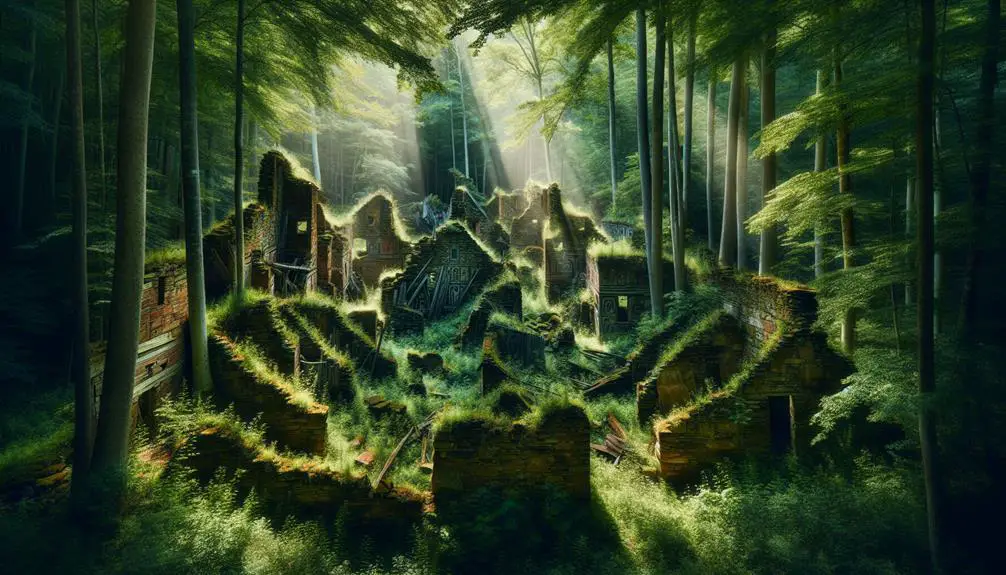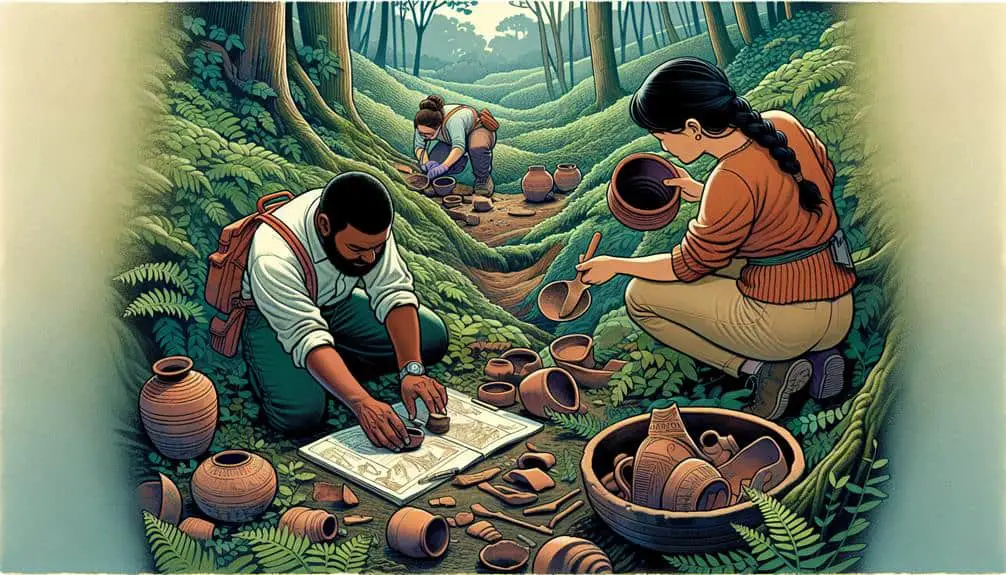To preserve Native American settlement remnants, start by researching local historical societies. They hold valuable information and can guide your efforts. Engage with tribal communities to understand their perspectives on preservation. Building connections and partnerships is key. Utilize preservation grants as resources to fund your projects. Tailor applications to highlight the cultural importance of the settlements. These three tips are just the beginning of your journey to honoring and safeguarding Native American heritage. Further insights await in your exploration of these preservation strategies.
Key Points
- Collaborate with tribal communities for preservation insights and partnerships.
- Utilize preservation grants to support conservation efforts.
- Highlight cultural significance in grant applications.
- Engage with local historical societies for valuable information.
- Tailor preservation strategies to emphasize the importance of Native American heritage.
Research Local Historical Societies
When investigating local historical societies, explore their archives to uncover valuable information about Native American settlement remnants. By connecting with experts in the field, you can gain insights into the significance of these remnants and their cultural importance. Visiting archaeological sites can also provide a firsthand look at the artifacts and structures left behind by Native American communities, offering a unique perspective on their way of life.
Local historical societies often hold a wealth of knowledge about the history of Native American settlements in the area. By delving into their archives, you may discover maps, photographs, documents, and other resources that shed light on the past. Experts within these societies can help interpret the information you find, providing context and clarity to your research.
Visiting archaeological sites where Native American settlements once stood allows you to see remnants up close and appreciate their historical value. Exploring these sites with a respectful attitude towards the culture and traditions of the Native American communities can deepen your understanding of their heritage. By taking the time to research local historical societies and visit archaeological sites, you can contribute to the preservation of Native American settlement remnants for future generations.
Engage With Tribal Communities
To foster meaningful connections and mutual understanding, engage with tribal communities to learn about their perspectives on preserving Native American settlement remnants. Building community partnerships with tribal nations is essential for successful preservation efforts. Approach these interactions with cultural sensitivity, recognizing the significance of the land and artifacts to the tribal communities.
When engaging with tribal communities, prioritize respectful communication and active listening. Seek to understand their values, traditions, and viewpoints regarding the preservation of Native American settlement remnants. By establishing open dialogue and demonstrating a genuine interest in their perspectives, you can cultivate trust and collaboration.
Collaborating with tribal communities also allows for a more holistic approach to preservation. Indigenous knowledge and cultural practices can provide valuable insights that may not be apparent through academic research alone. By working together, you can develop preservation strategies that honor the history and heritage of the land while respecting the wishes of the tribal communities involved. Remember, fostering meaningful relationships built on trust and cultural sensitivity is key to successful preservation efforts.
Utilize Preservation Grants
Consider leveraging preservation grants as valuable resources to support the conservation and protection of Native American settlement remnants. When applying for preservation grants, it's essential to do so strategically. Begin by researching grants that specifically focus on historical preservation projects related to Native American heritage. Tailor your grant applications to highlight the significance of the settlement remnants you aim to conserve and the cultural importance they hold for Native American communities.
To increase your chances of success, collaborate effectively with tribal communities and heritage organizations. By partnering with these groups, you can demonstrate a commitment to respecting and preserving Native American history in a culturally sensitive manner. Engaging in meaningful partnerships won't only strengthen your grant applications but also guarantee that the preservation efforts align with the values and priorities of the communities connected to the settlement remnants.
Frequently Asked Questions
Are There Any Specific Laws or Regulations in Place to Protect Native American Settlement Remnants?
Legal protections exist for Native American settlement remnants due to their cultural significance. Regulations safeguard these sites, preserving heritage. Awareness and adherence to these laws are essential in maintaining the integrity and respect for these historical landmarks.
How Can Individuals Support the Preservation Efforts of Native American Settlement Remnants on a Personal Level?
To support the preservation of Native American settlement remnants on a personal level, you can engage in community involvement by volunteering for restoration projects, participating in educational programs, and respecting the cultural significance of these sites.
What Are Some Common Challenges Faced When Trying to Preserve Native American Settlement Remnants?
Preserving Native American settlement remnants can pose various challenges. Understanding historical significance, securing funding, and balancing development interests are common hurdles. By participating in preservation efforts, you can help overcome these obstacles and honor indigenous heritage.
Are There Any Notable Success Stories of Native American Settlement Remnants Being Successfully Preserved and Maintained?
You can find notable success stories in the preservation efforts of Native American settlement remnants. These stories showcase the dedication and collaboration of communities, historians, and government agencies in safeguarding these important cultural sites for future generations.
How Can the General Public Learn More About the History and Significance of Native American Settlement Remnants in Their Area?
To explore the history and significance of Native American settlement remnants, attend interactive workshops led by indigenous elders. Engage with educational exhibits showcasing artifacts and stories. Immerse yourself in the rich tapestry of their culture.



